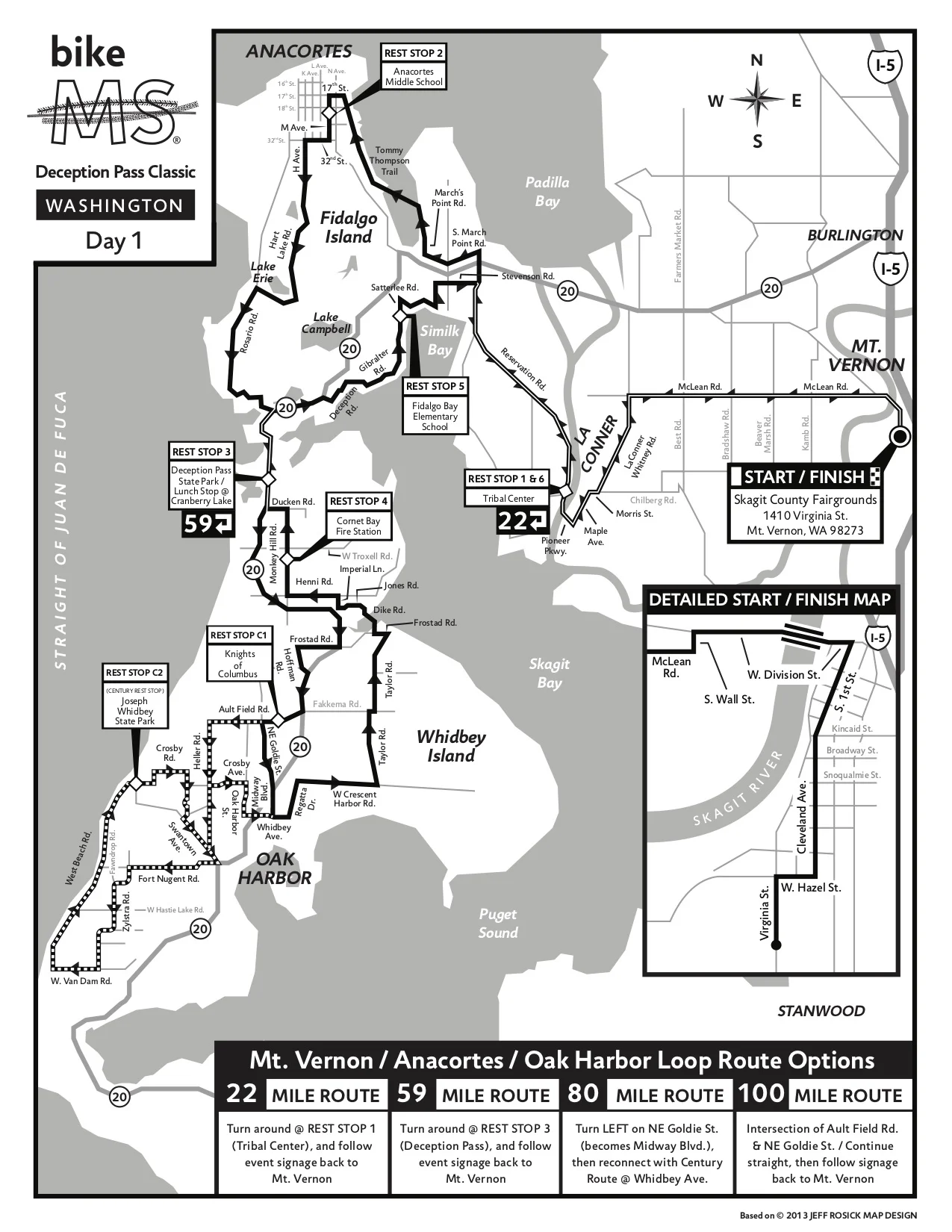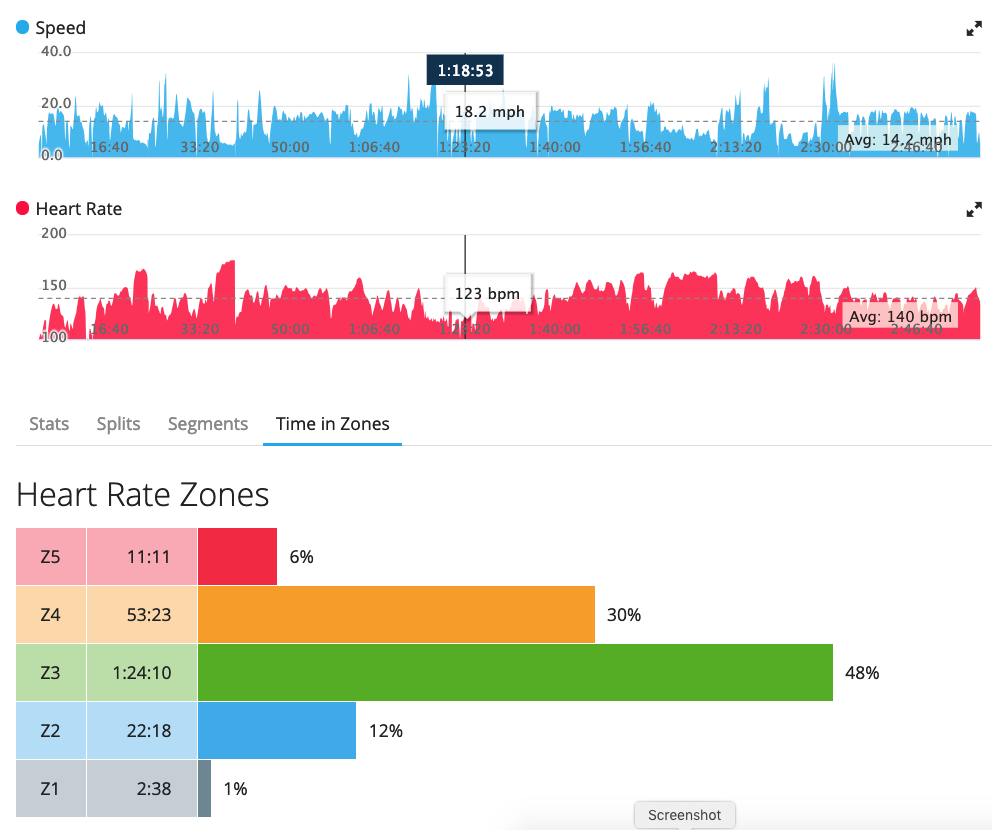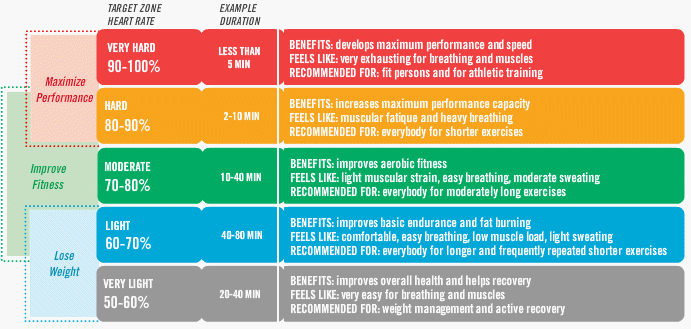My white bicycle is 15 years old this year, which I guess is pretty old for a bike. I remember when I got her, it was spring of 2004, probably this month. I rode a lot that summer, and got a lot of compliments on my bike. Before I bought this bike, I got a lot of guffaws and comments to the tune of, “how and why are you riding that?!” In reference to my heavy mountain bike. I assumed this is just how nice bikes got treated, but after a few years, the compliments stopped. I guess she got old. The resale value on my bike is about 5% what I bought her for. One would think it’s time I get a new bike. But my white bicycle is perfect. I gave her a bath yesterday, and she still glimmers and shines when cared for. Sure, she has dents and dings and scratches galore, but she still rides light and nimble and smooth. I still feel better on this bike than I do anywhere else. I project her taking me where I want to go for at least another 5 years without a hitch.
It's bike Month
Seriously…how did it get to me May already? I’m not sure, but apparently it’s bike month. So, let’s see how I do!
Another Bike MS Washington?
Map from Bike MS Washington
So…I a friend is thinking about doing this ride with his work team. I did this ride once, and was nonplussed doing it as a solo rider. The ride had such a corporate preference that a solo rider had nowhere to fit in. But…if I could join a corporate team….well, that temps me like you’d never believe! Let’s do this!
Viking Tour
I hear about this ride years ago, and always had a little interest in doing it. It never seemed like quite as exciting as it should be. But, I have a van now and I can camp wherever, whenever. Suddenly, the Viking Tour sounds like a lot more fun. Well, this year it’s going to happen! Stay tuned for the ride report.
Bike Thing Thursday: Hectic Helmet Hair
I went to the bike Expo and got this awesome amazing “Hectic Helmet Hair.” This was a sort of wiggly, rubbery hat that turns your helmet into a Koosh ball! I eagerly got it home only to realize that the sporty aerodynamic point of my helmet didn’t fit under the hair. It seemed the hair was designed to work with the rounded Nutcase style helmets; the kind favored by urban riders and fixies. So, I saved my helmet hair until some day when I would have a rounded helmet of my own. A few year later, I finally came upon a nice, rounded helmet for a tiny amount of money. It seemed smart not to spend too much given that I was buying a helmet just to put a cover on it. I excitedly pulled my Hectic Helmet Hair out of storage and - - - OH NO! IT MELTED! Somehow the rubber must have come into contact with some sort of solvent. The hair had melted, and now longer in a hat shape, couldn’t be worn with any sort of helmet. Sad , sad day. I never got a chance to enjoy what was surely the coolest helmet topper that ever existed.
Personalized Heart Rate Zones Matter
Garmin’s Default Zones
Personalized Zones
I recently had a performance test (VO2 Max and maximal heart rate). The physiologists assigned personalized heart rate zones using the results of this test. I decided to compare my new zones with my “old” zones. My old zones were assigned by Garmin Connect. Garmin uses a lot of information to create your zones, but can only estimate VO2 Max based on other data. The charts above represent 2 bikes rides. Both rides were with the same riding group, in similar areas north of Seattle. Both rides were very similar in distance, elevation, time and effort. Really only things different are the times spent in each heart rate zone. Even the average heart rates are practically identical! Garmin has me spending a little time in zone 2 and 5 and nearly the whole ride in zones 3 and 4. My personalized zones have me spending most of my time in zone 2. I also spent 30 minutes in zone 1 and no time in zones 4 and 5.
What does this mean and why do I care? Zone training is a bit of a dying art in cycling these days, falling behind power training. I am a recreational rider, I don’t compete, I have nothing to gain from training beyond good cardiovascular fitness, so I see no reason for me to shell out hundreds of dollars for a power meter. Even so, I am motivated to perform at my best, so gazing at my heart rate from time to time makes sense to me. The first thing I was told when I got my zones was that the most useful thing for me to do was to avoid zone 3 (the green zone) better known as “no man’s land”. While this aerobic level is a great place to build strong endurance, apparently you build it faster by spending more time in zone 2, then pushing up to zones 4 and 5. My head sunk when I heard this “green zone” training is the most common mistake made by casual cyclists, as I knew I spent the overwhelming majority of my time in the green zone. It also seemed curious to me how much time I spent in the upper zones. I’d spend some rides almost entirely in the top 2 zones. That didn’t seem healthy. However, by adjusting zones for my real calculated VO2 max, you see that I actually spend most of my time in zone 2, like I should. However, I spent a bit of time in zone 1, which is no zone at all. Zone 1 in this case is sitting heart rate. My lab used a 4-zone method and Garmin uses 5, so my personalized zone 1 is nothing and zone 2 has a wide range encompassing both warm-up and low intensity activity. Since my tracker times out when I am stopped, I spent too much time riding my bike not working out at all. I also spent a bit of time in zone 3, but I think that’s OK for this type of ride. It was a group ride, and our goal was to ride at the same pace, so nothing really called for the higher zone use.
I think it’s pretty interesting how different the graphs look. The “accurate” graph far better reflects my perceived exertion, for what it’s worth.
Heart Rate Zone Training Chart
I found this chart from a web search. I don’t like the “lose weight” category. From what I understand, the assumption of using zones to lose weight has been disproven. Even though it is easier and more sustainable for most people to do activity at low intensities (like walking), burning 100 calories walking or doing box jumps is the same 100 calories to your body’s caloric needs at the end of the day. That being said, I liked this chart the best out of the many out there.
Registered to Bike MS 2019
I kinda can’t believe it. 2019. 2019? Really?! I am feeling really good about this year. I am fit and after a year of taking it light, I feel like I can do a lot to raise a lot of money this time around. How much will it be? What will be new this year? I’ve been doing this ride many years. I take the same route, stay overnight in the same place, ride the same pace on the same bike, get donations from the same faithful donors. This year there will be more than ever before!
The society updated their rider pages to look more like the Social Media standard. For what it’s worth, here are some screenshots of my current standing. Team SlugFish is #2. It won’t take long before we are #1. Looking forward to this!
Can't Wait: West Maui loop 2019!
Looks like I am headed back to Maui this March. How could I visit without riding this loop again? It was truly and experience not to be forgotten. I can’t stop thinking about doing it this next time! What will I see? How hot will it be? I hope to improve my video-recording capacity, too. Fingers are crossed!
2018 in Summary: Most miles in 6 years
2018 turned out to be a fantastic year for physical activity. I logged 3,750 miles total. 3,600 of those miles were logged on the bike. My past few years have looked like this:
2018: 3600
2017: 2,897
2016:2,760
2015: 2,744
2014: 1,784
2013: 3,048
I am happy about the year in so many other ways. I rocked it in the boxing gym, too. Overall, I kept pretty consistent whether it was cycling, boxing, skiing, yoga or hiking. I added a lot more meditation to my regime this year and kept great sleep hygiene. I stayed healthy with no major upsets. I managed stress well, although 2018 didn’t bless me with any severely stressful events. I feel healthier than I’ve ever felt before, and even felt like I was at my “peak” a couple of times. It’s an amazing feeling.
The Tunnel Ride
Last year’s Emerald City Bike ride was kinda cold and a bit of a slog. I worried another ride on the viaduct in cold February might be the same. The weather cooperated well for The Tunnel Ride, however. We stayed cool and dry. And the snow waited for everyone to get home before it started falling.
Check out my Video
Check out my Photos
many of these photos are compliments of the lady Wooleaters. Thank you for being such great photographers! This was more a day to document history than it was a ride. What will this same spot look like in 5 years? Ten years? It won’t be the same.
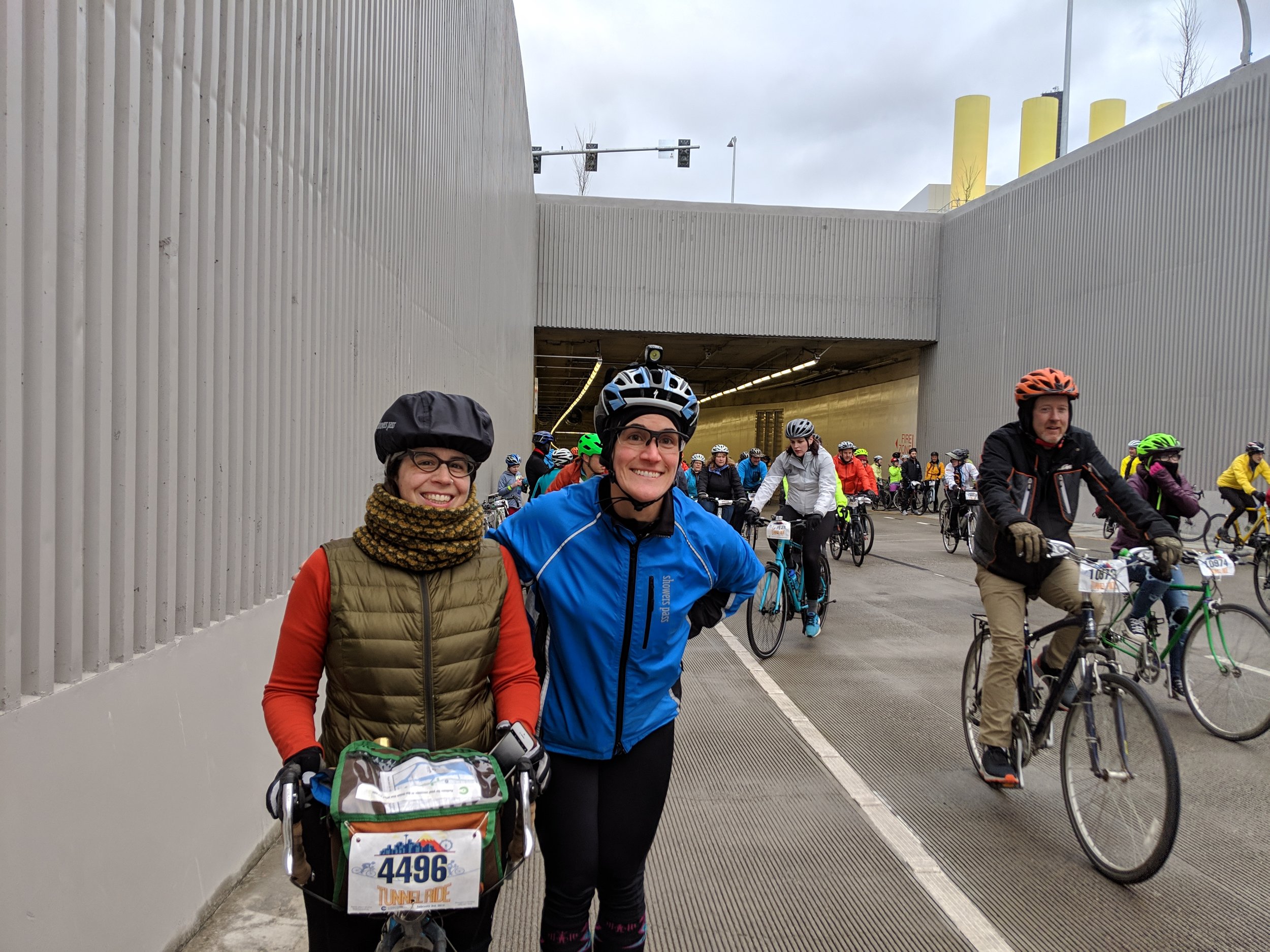
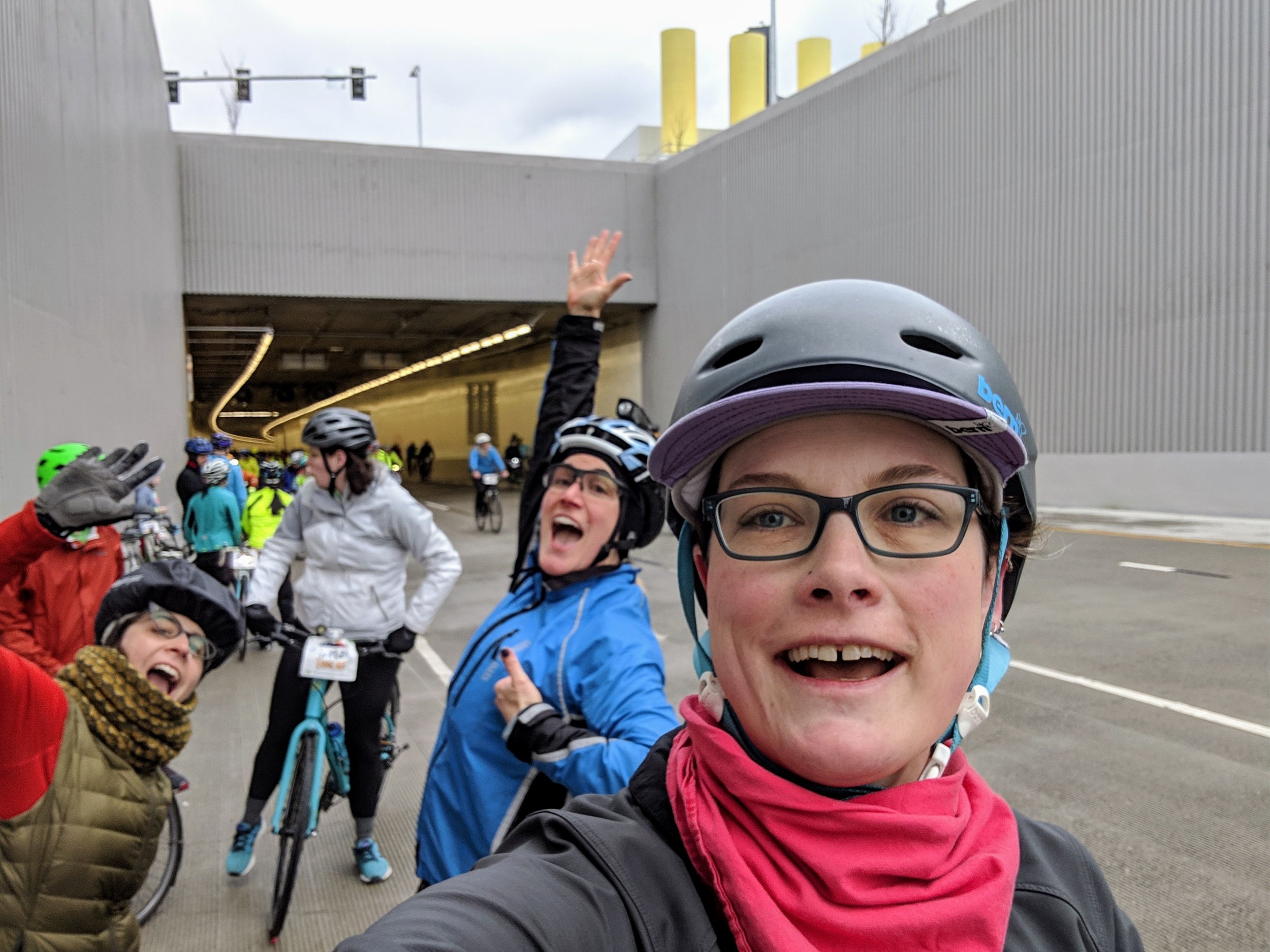

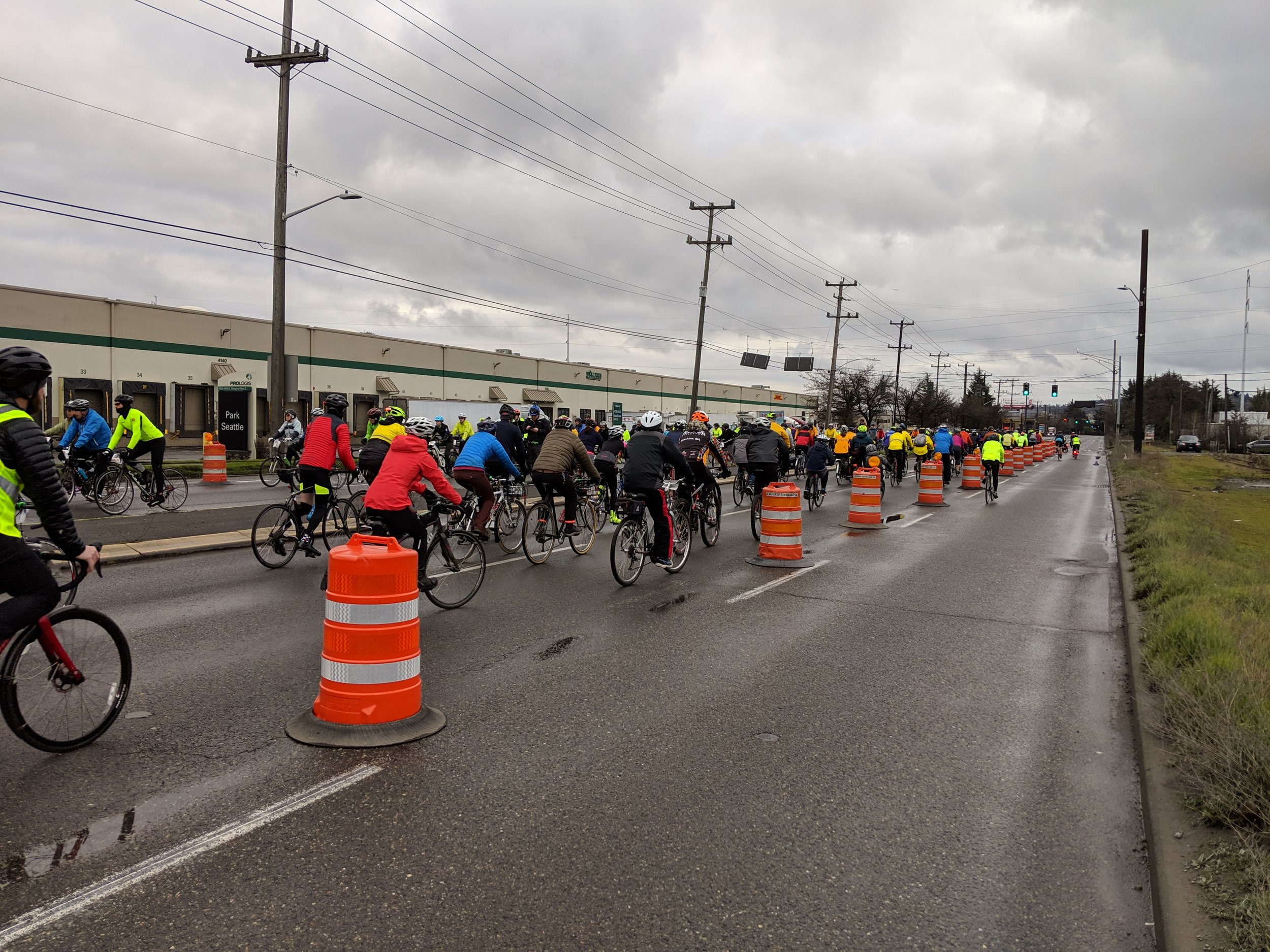


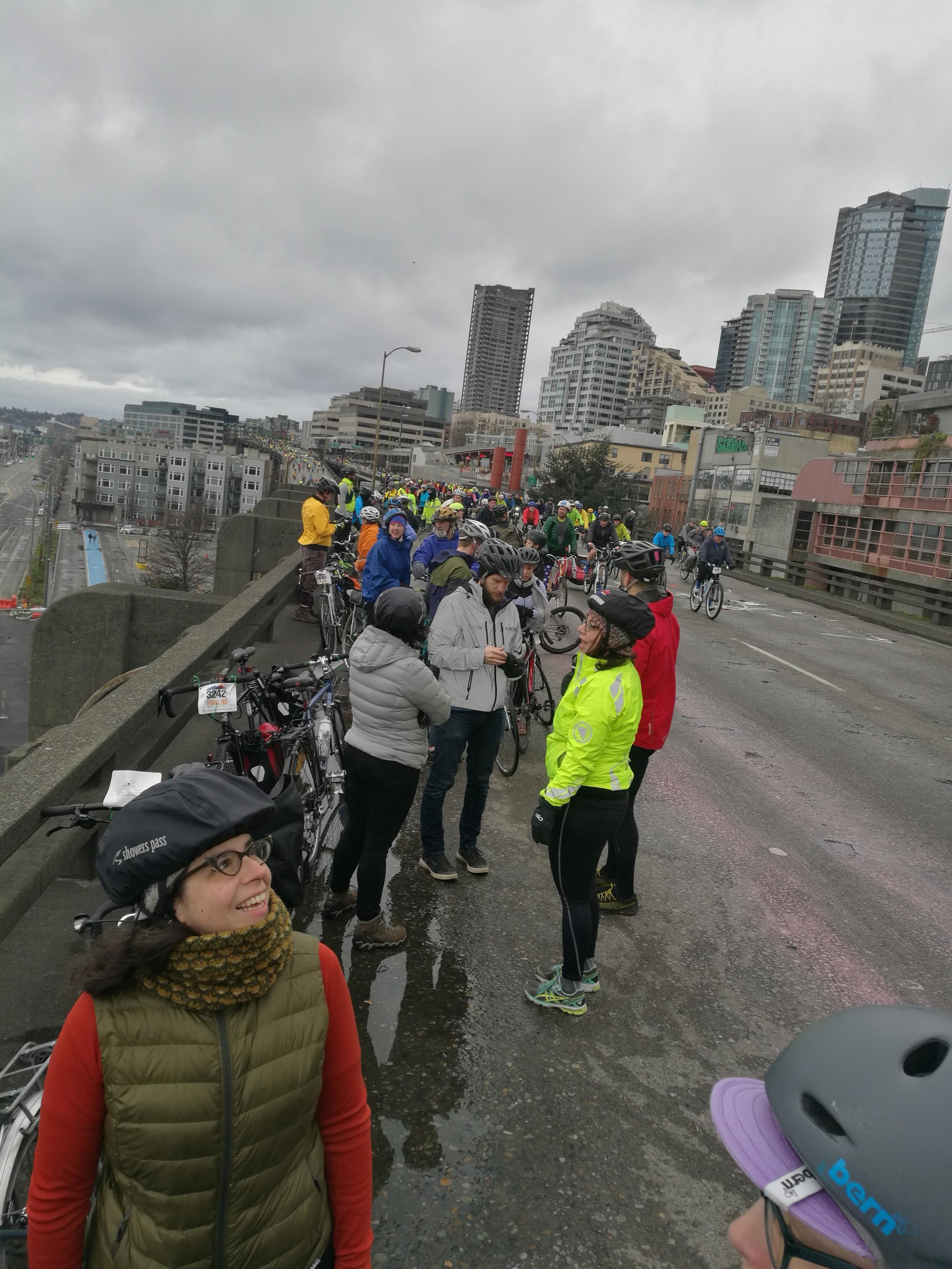
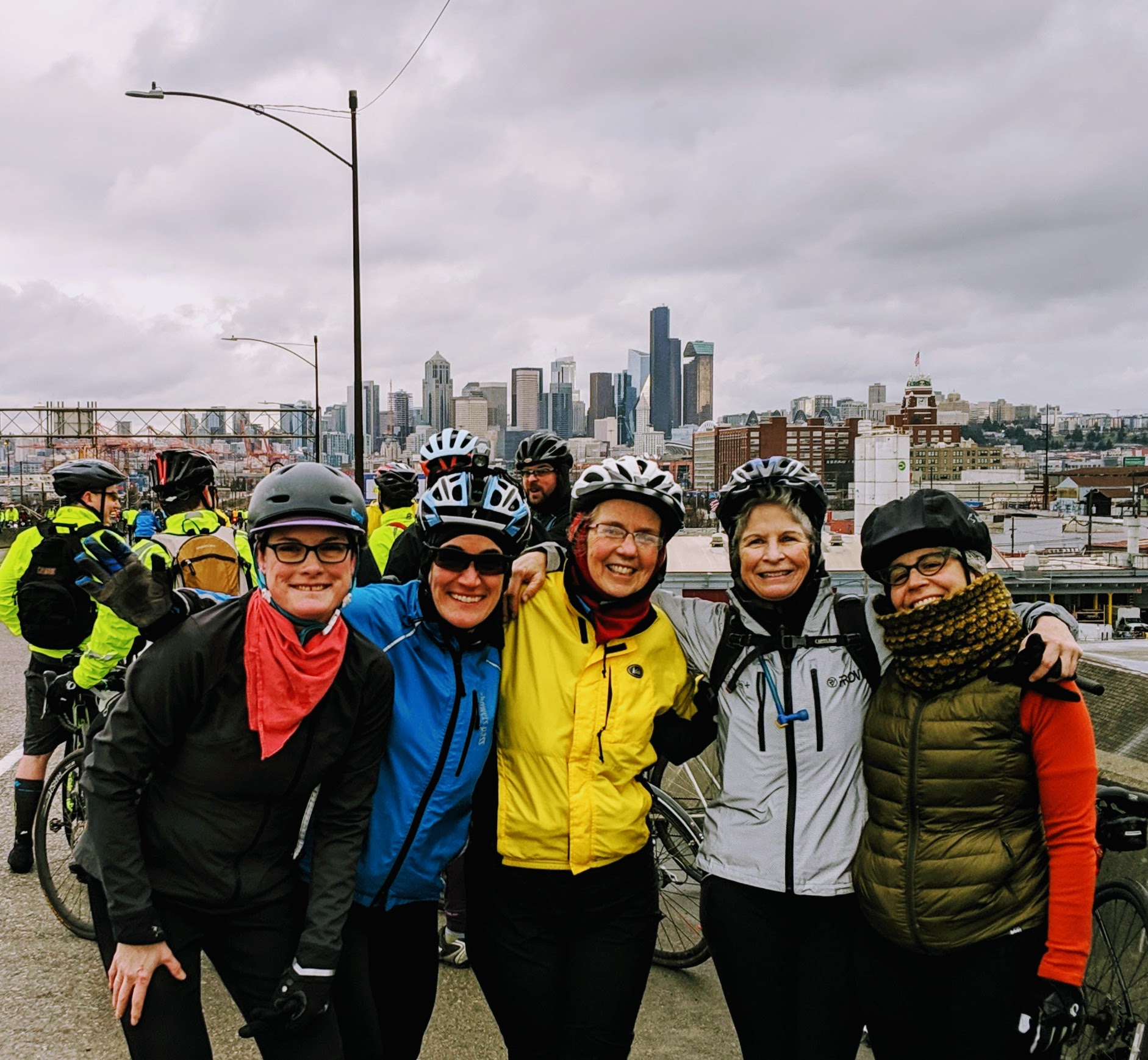
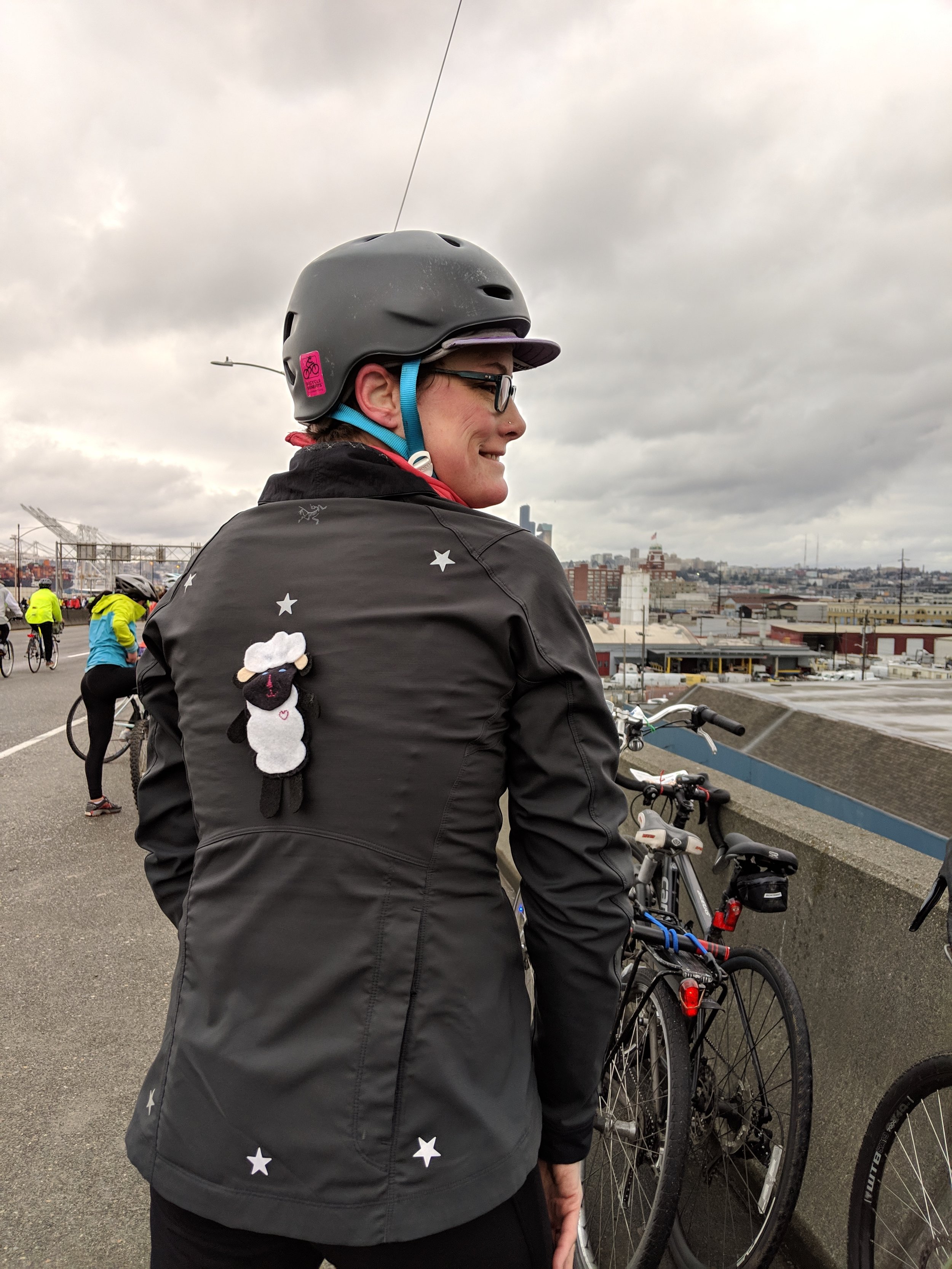
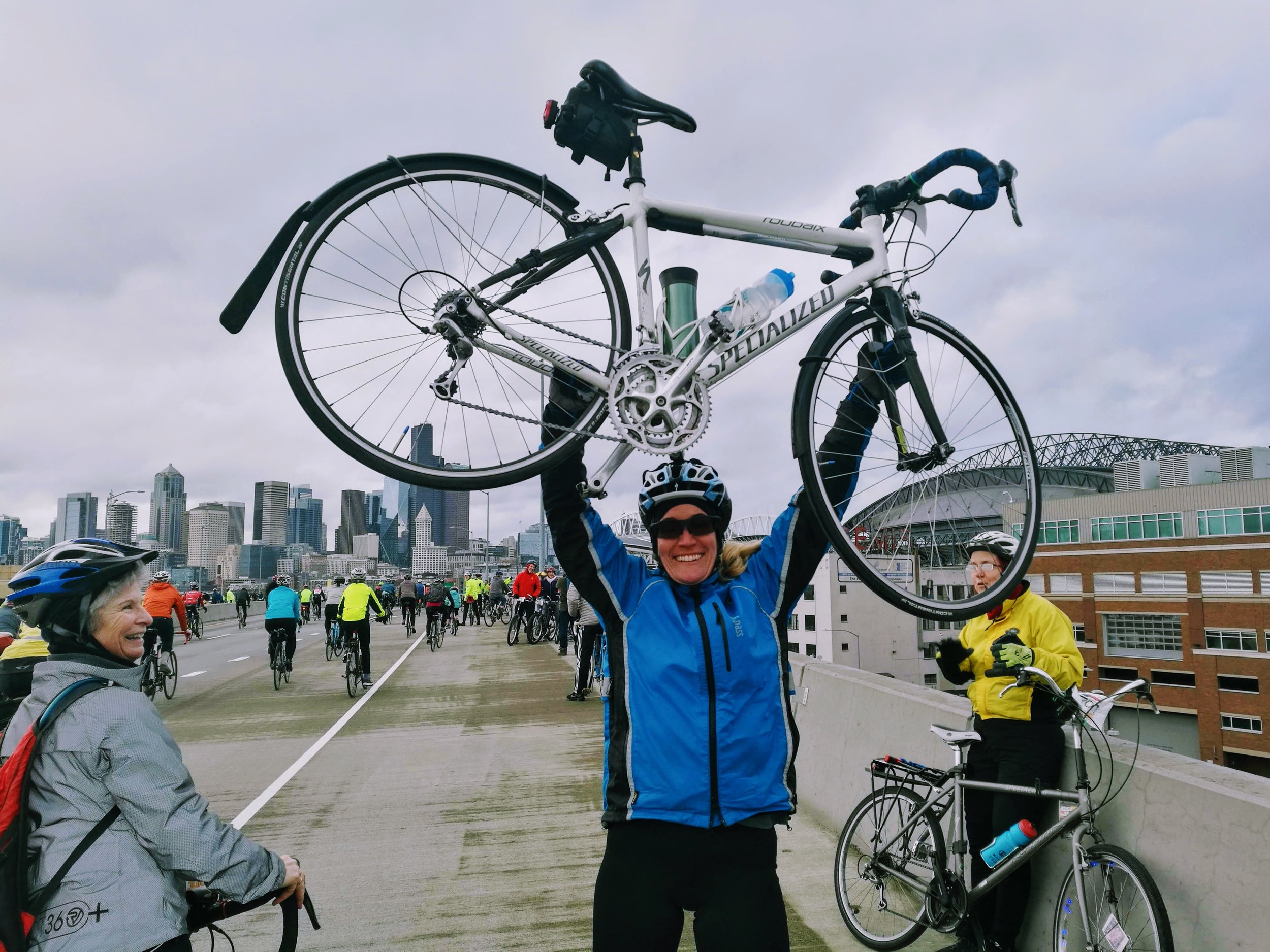


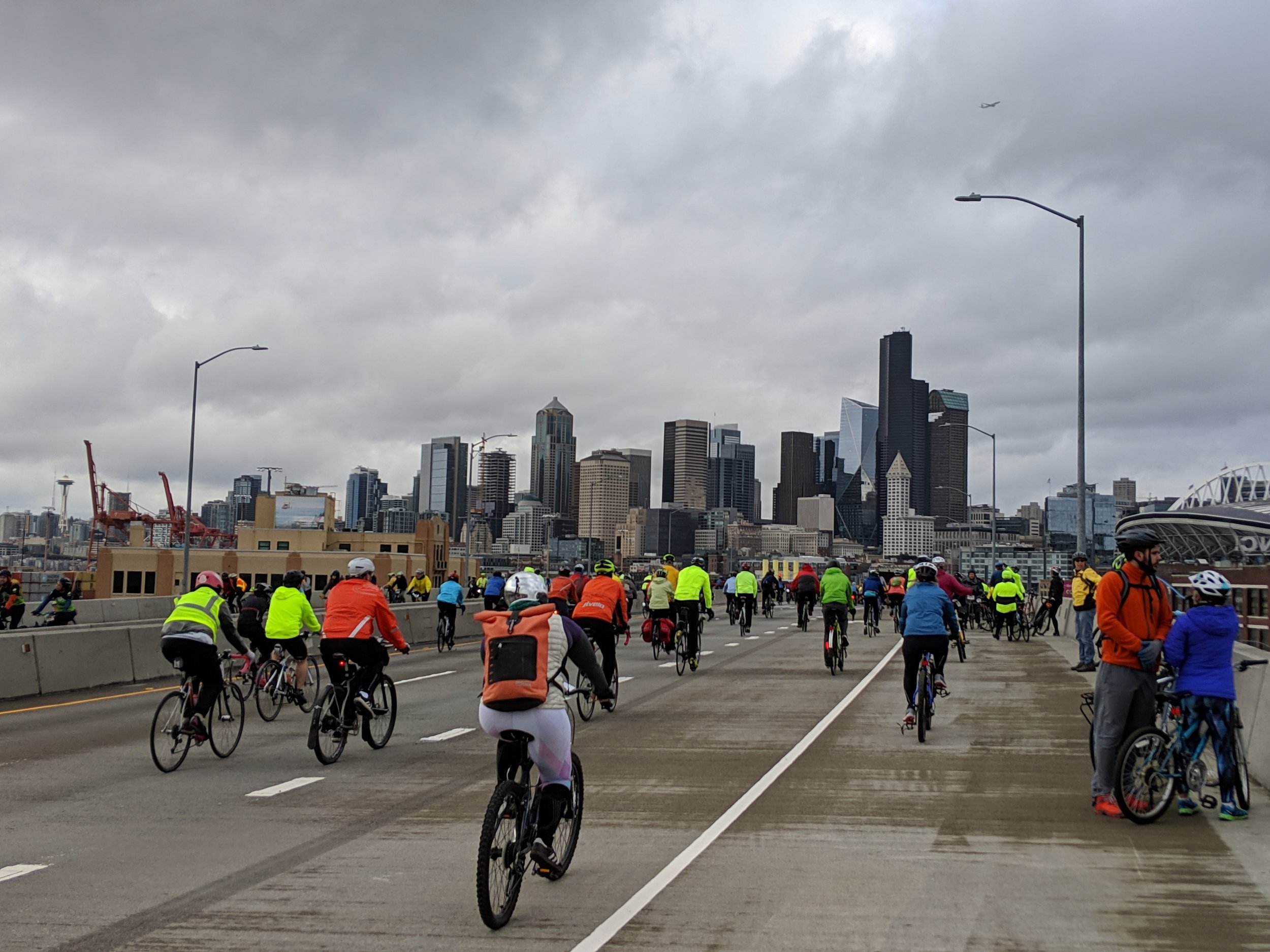
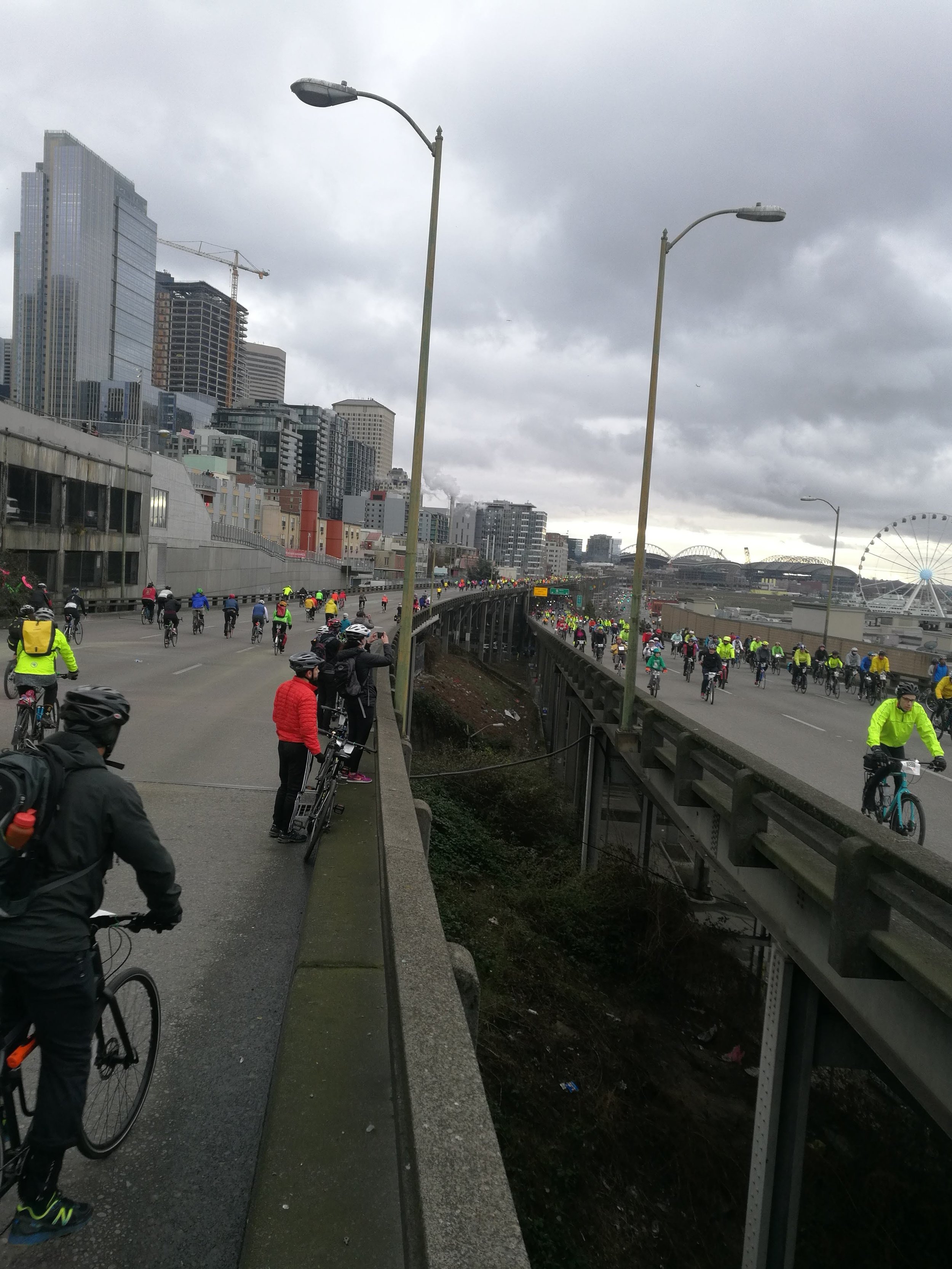
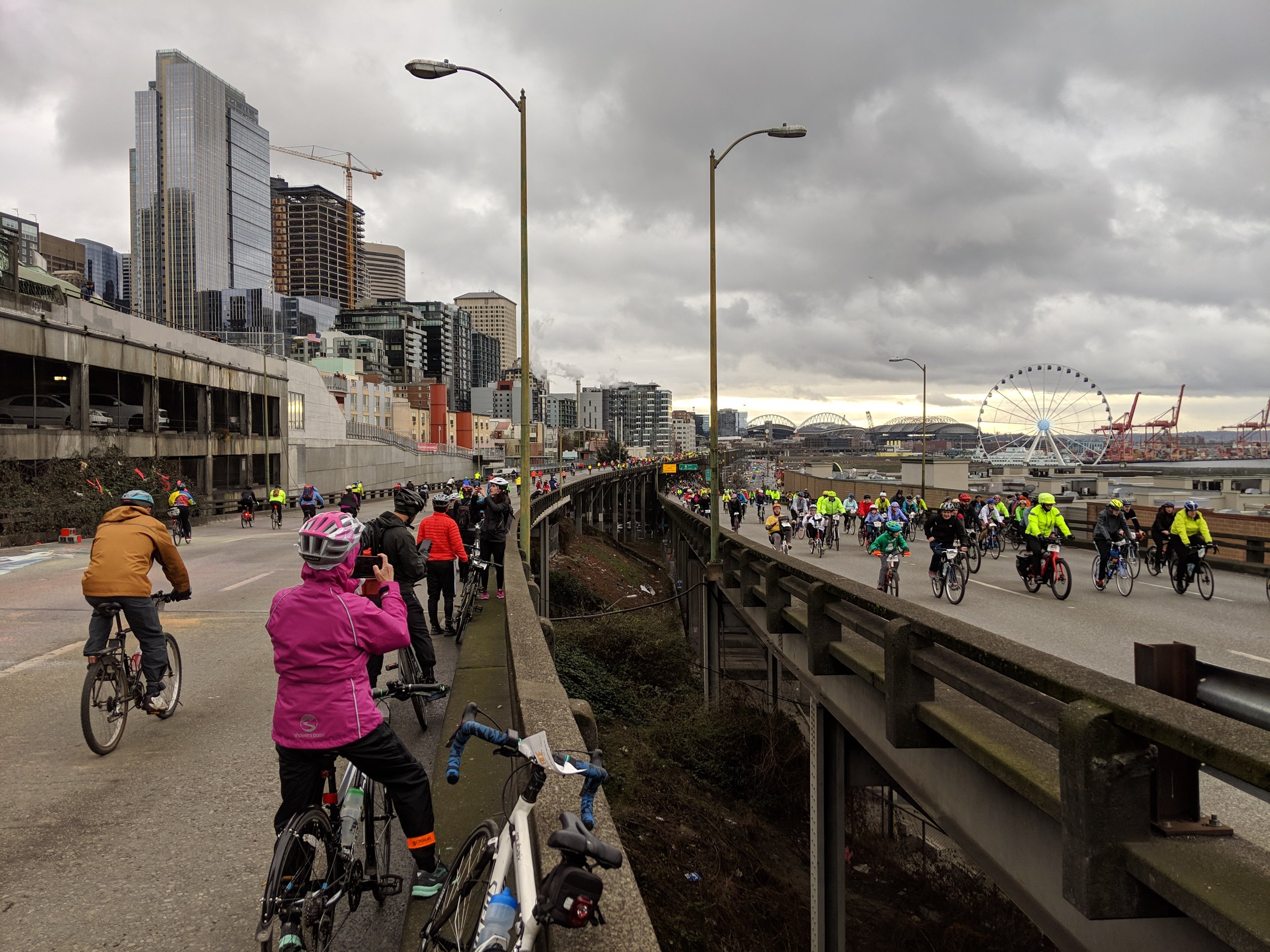
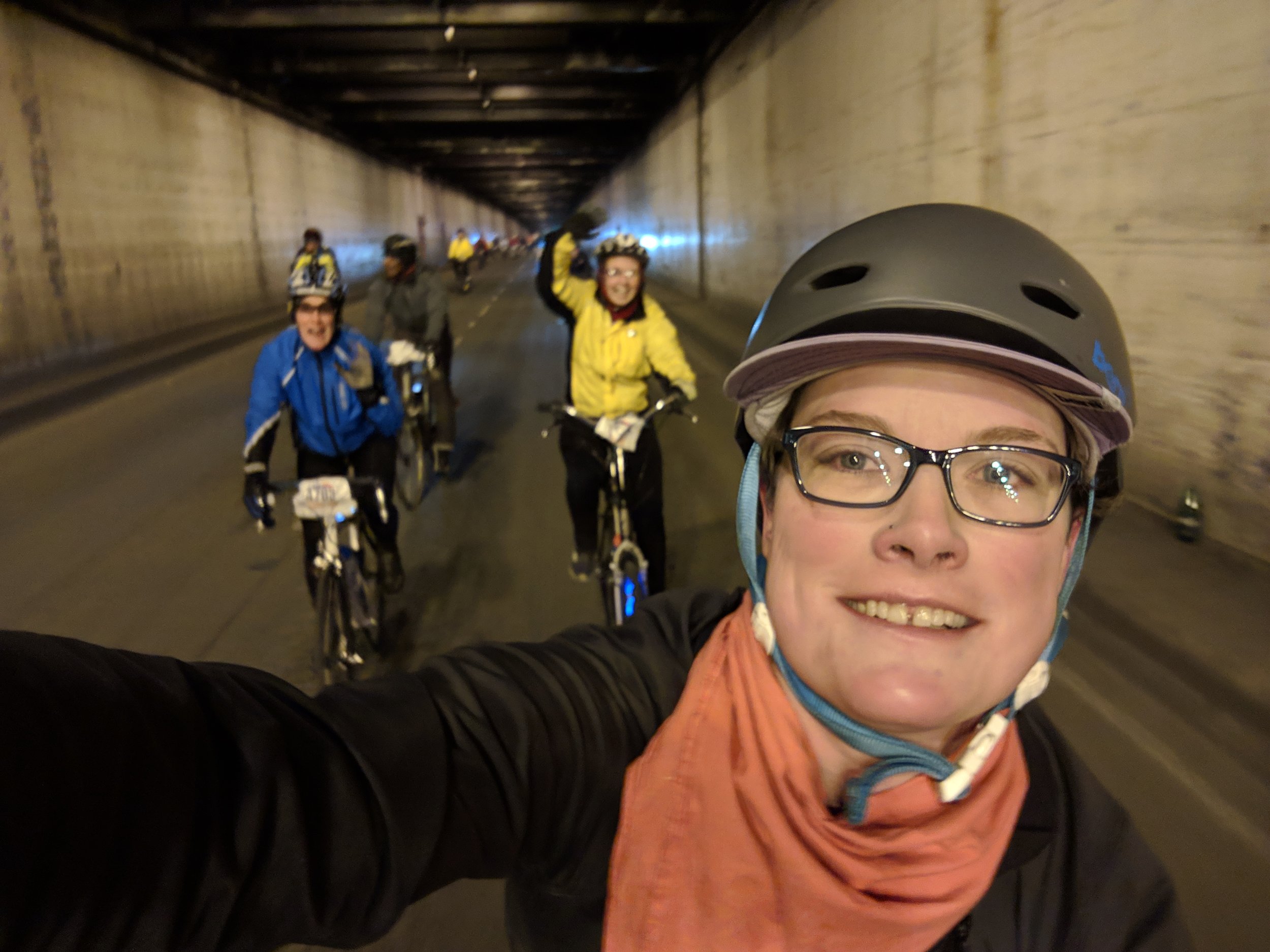
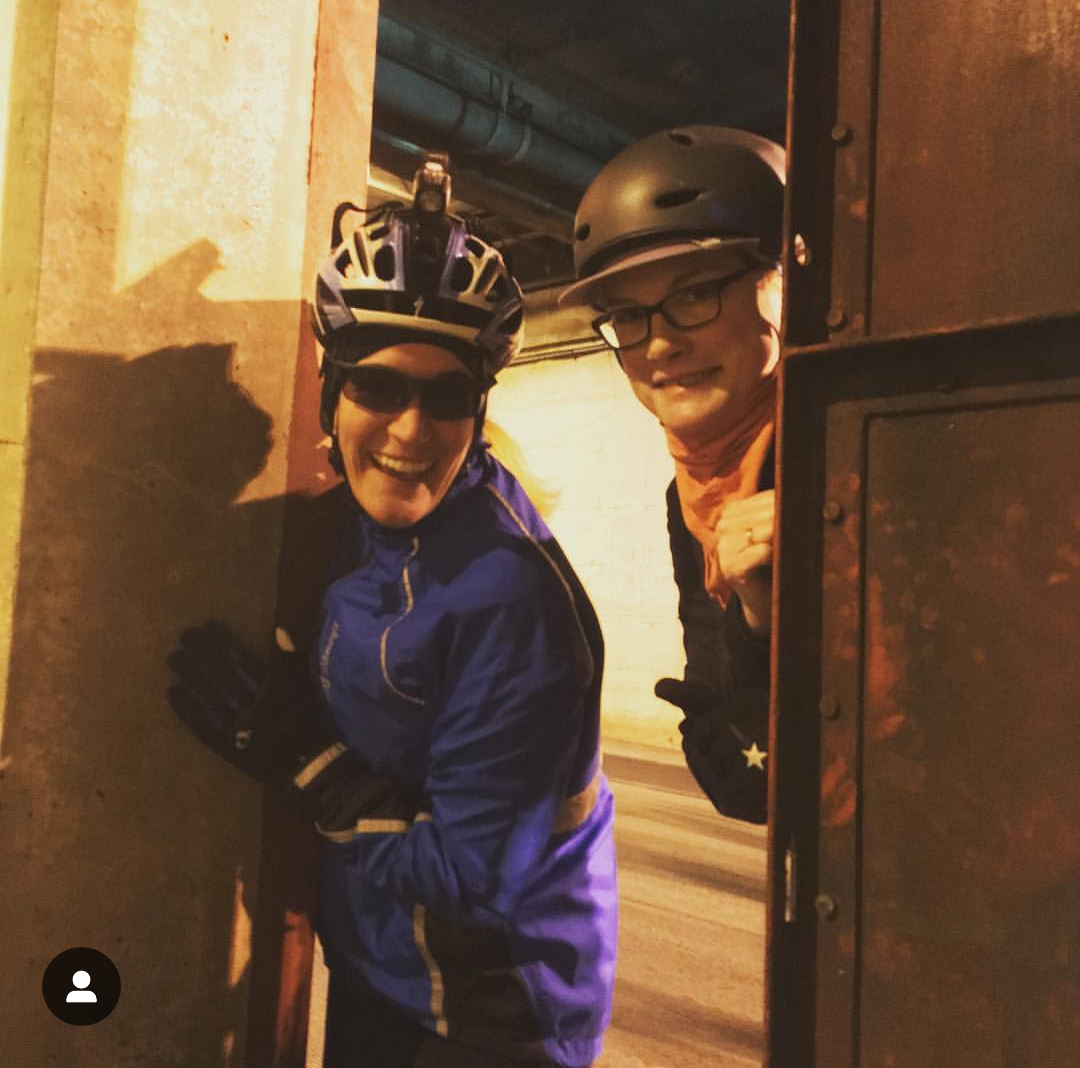

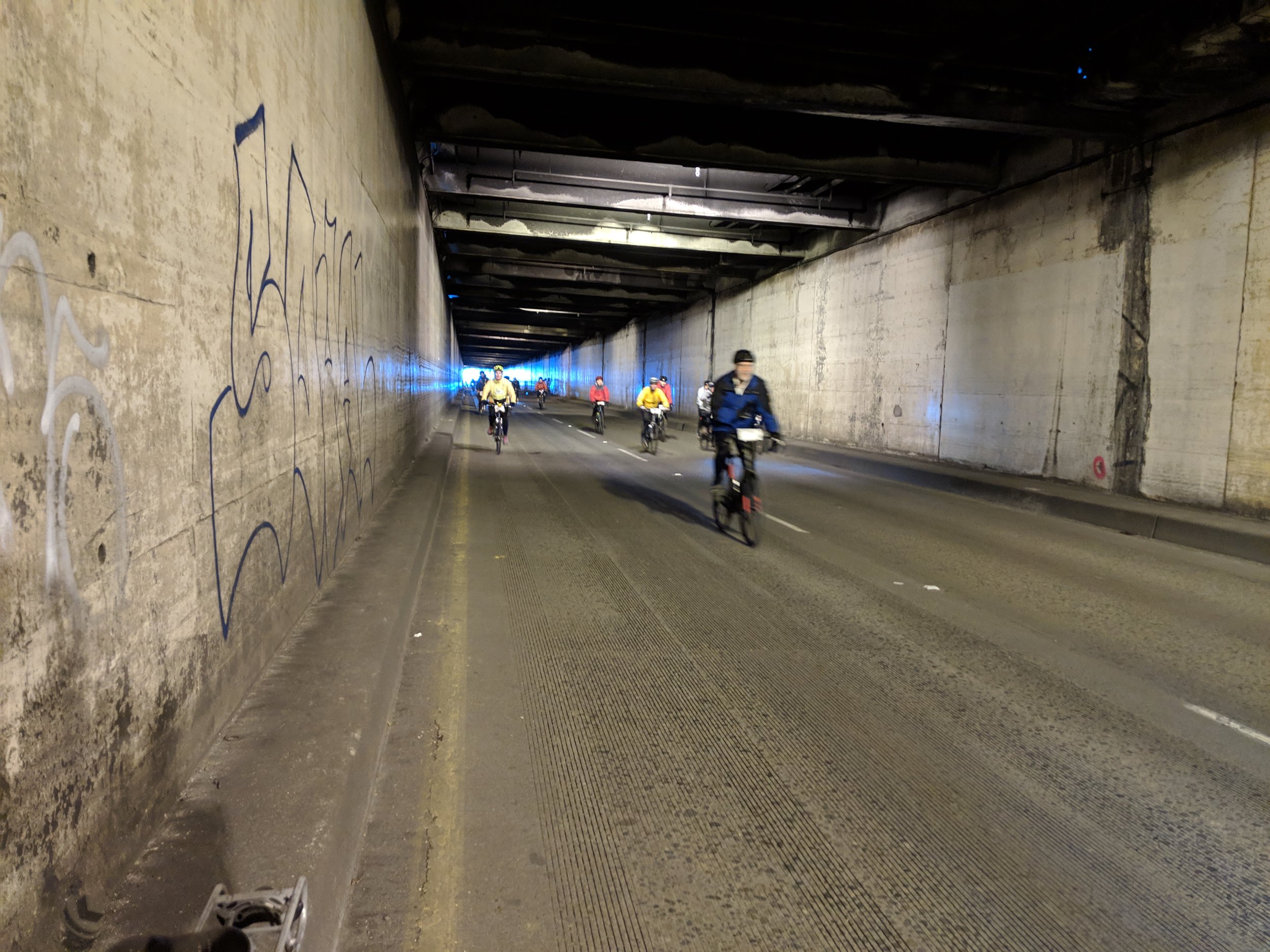
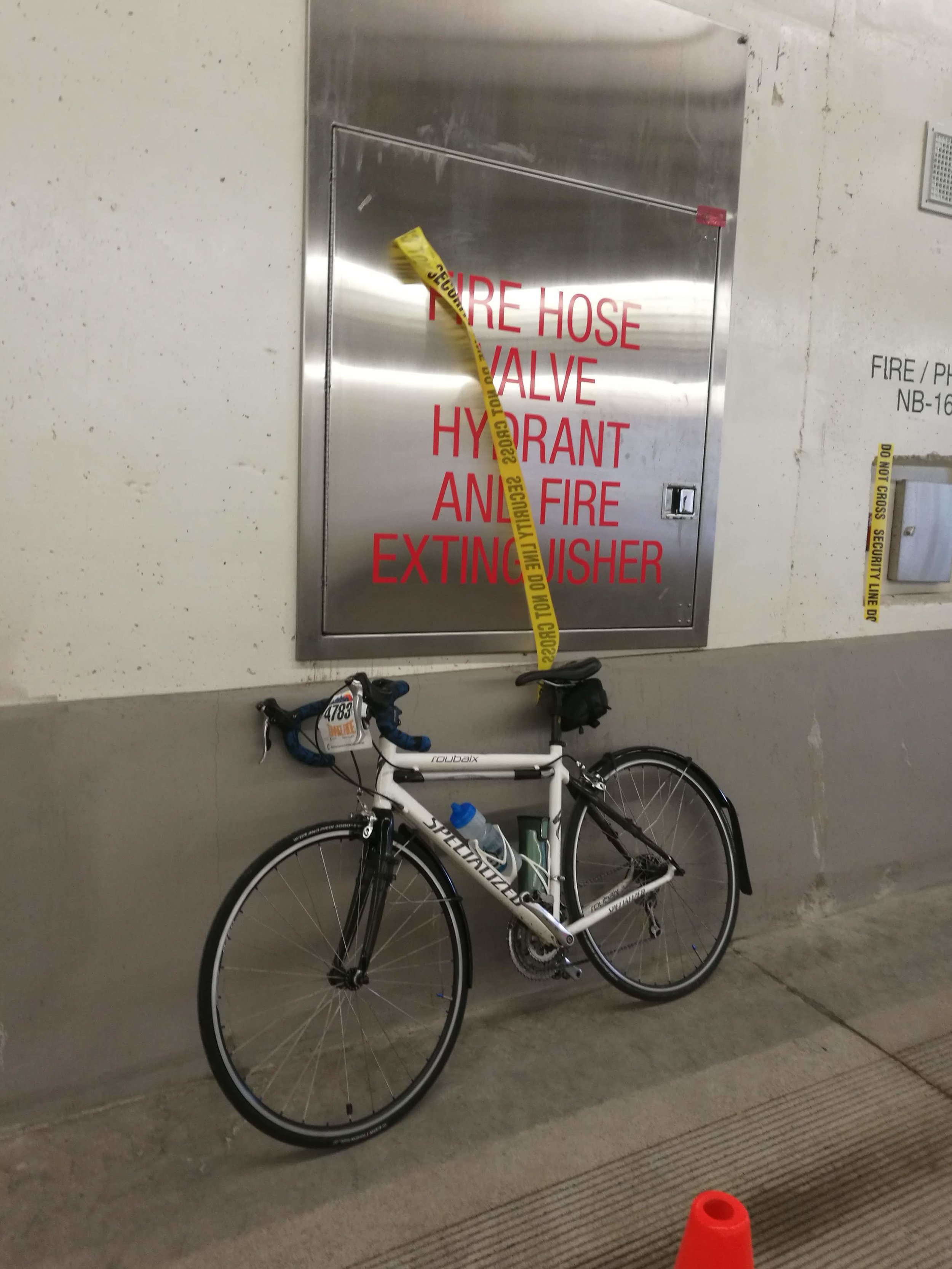
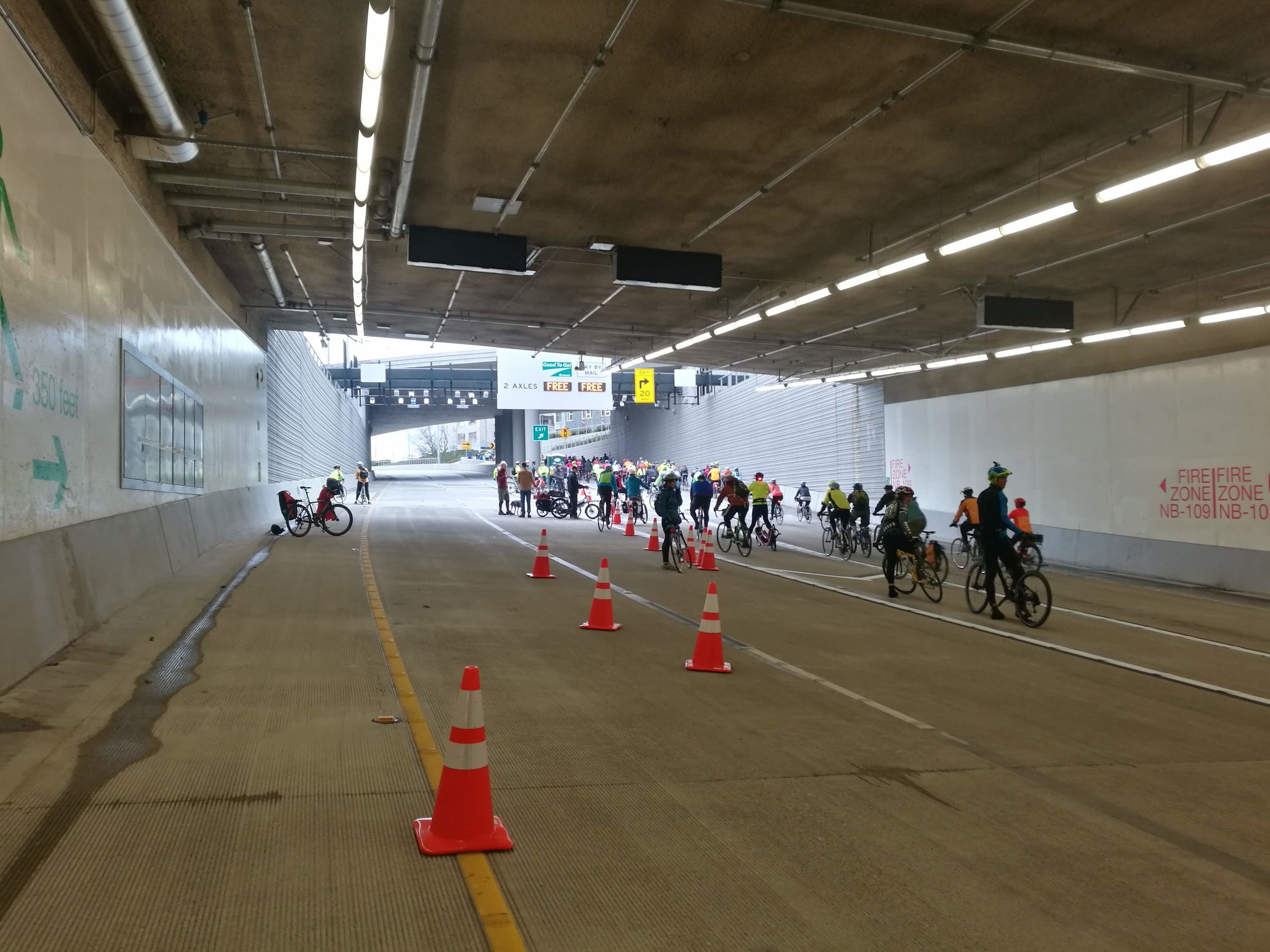
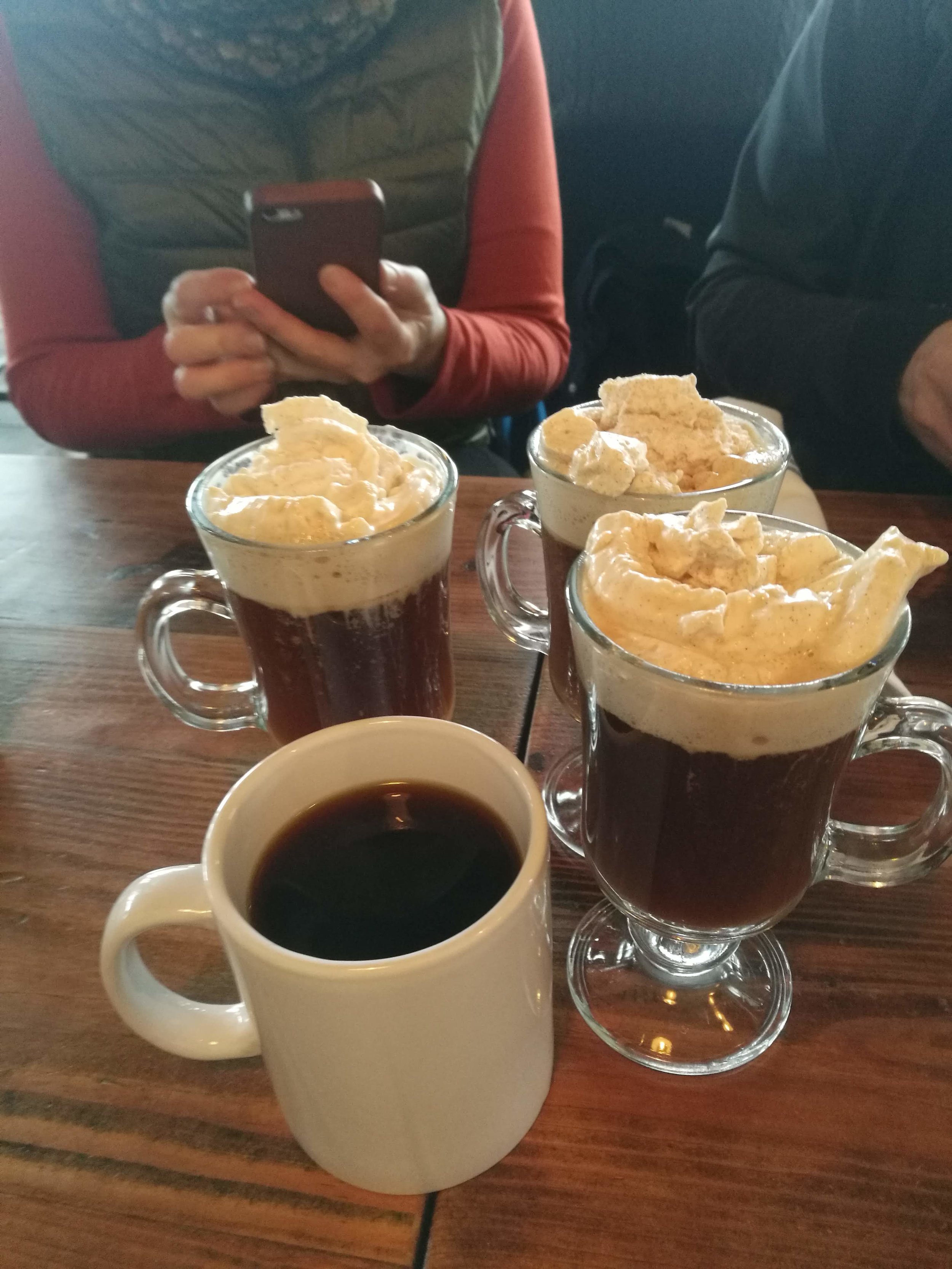
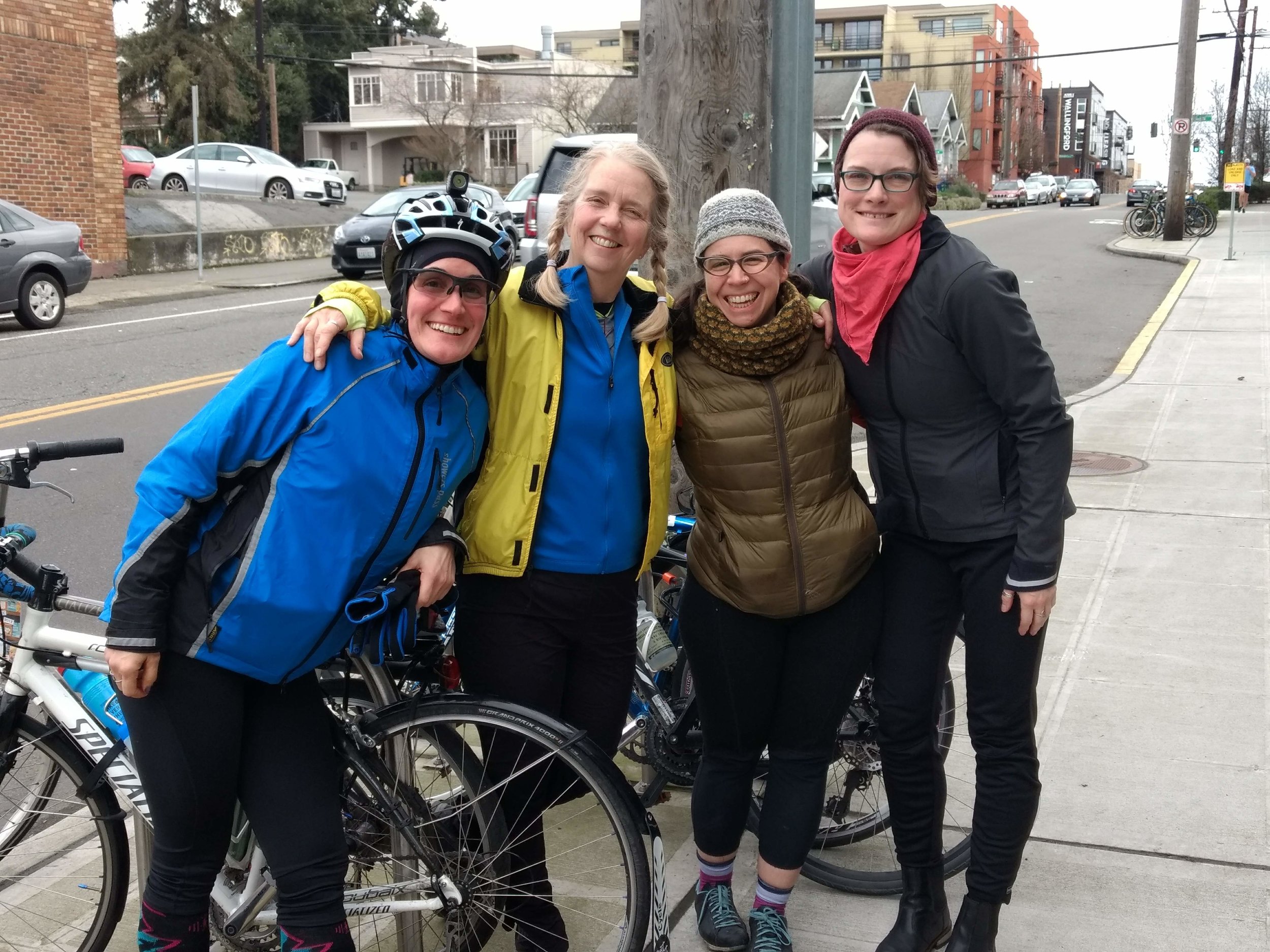
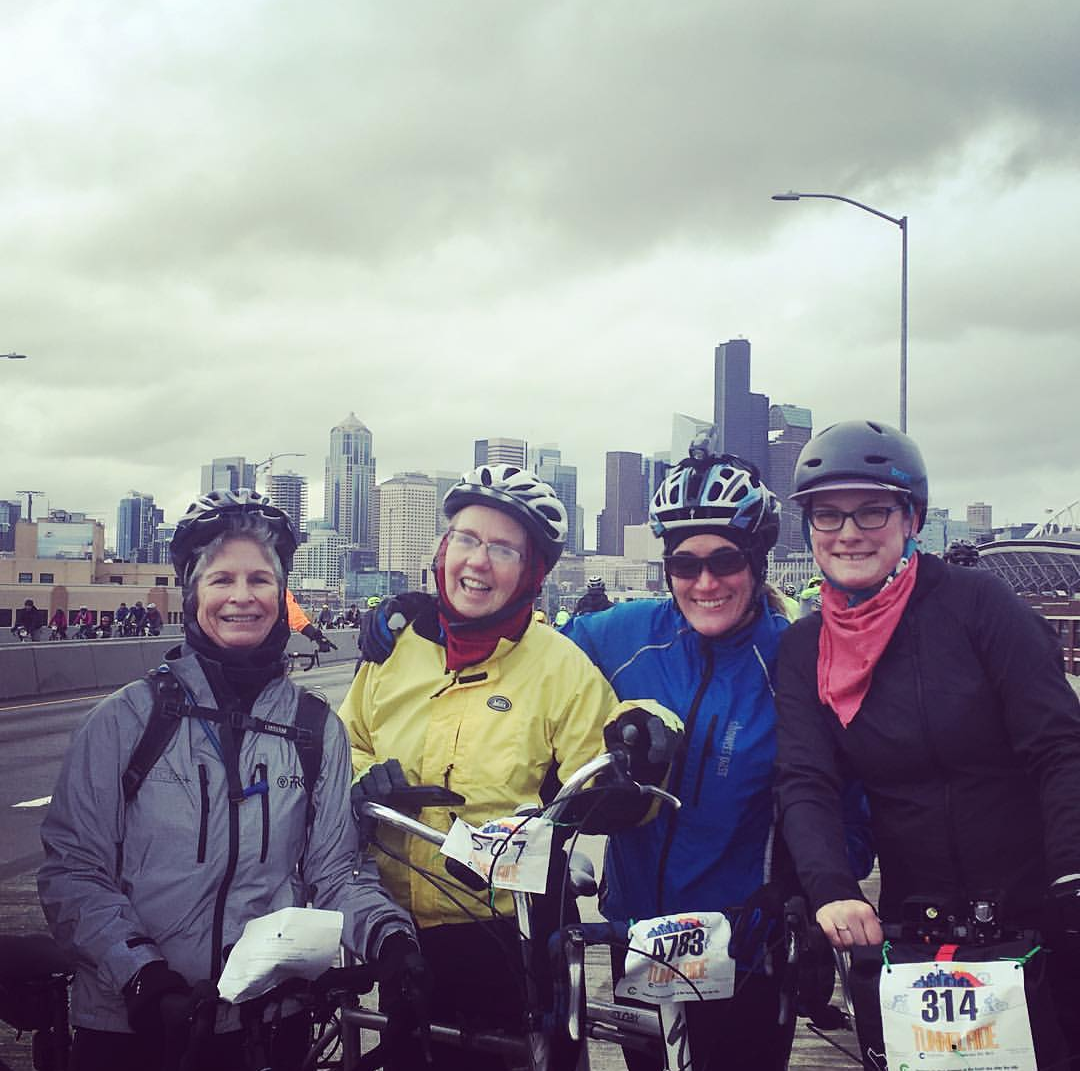
Check out my Stats
Getting Geared up for the Tunnel Ride
It’s tomorrow! I will riding a piece of Seattle’s history. This is a thing no cyclists after me will ever be able to do. I’m fine with rain, but I hope it’s not too cold. Fingers crossed for a great time!
My Own Best Self
I recently took a fitness test that measured my VO2 Max, ventilatory values and lactate threshold. I went to a physiology lab at a college to take the test. Each test is sport specific, so I mimicked cross-country skiing when I did mine. I stood on a wide, sticky treadmill with ski poles. The physiologists strapped a large mask over my nose and mouth to measure my breathing and oxygen consumption. It covered so much of my face that it helped me feel more on my own, diminishing the extreme anxiety I felt being in a “test” environment. On the flip side it was hard to breathe and felt a little claustrophobic. They strapped a heart rate monitor to my chest. I wear my own monitor every day, so that was no big deal. In fact, the polar chest strap felt so comfortable that I forgot it was there. My own Wahoo strap has to be unpleasantly tight to stay on and I look forward to removing it the second I finish working out. As I started walking on the treadmill, they incrementally increased its elevation and speed. They pricked my finger every 3 minutes to measure the lactic acid in my blood. They had to keep increasing it more than they anticipated because my fitness was higher than they or I predicted.
It turns out my VO2 max is literally “off the chart” at 45.5 ml/kg/min. The chart above doesn’t have a top end, it just lists over 36.9 as superior for my age group. The chart the lab uses lists 39 to 42 as superior for my age group. Even though cardiovascular capacity decreases with age, I am still superior for any age! perused the internet a bit to learn more about these numbers, and immediately noted that every chart is a little bit different. Still, I rate as “superior” for all of them. Many sources cited that heavier weight decreases the calculation. I ate a gigantic resort omelet just before the test. Not sure if that was to blame, but I weighed in 9 pounds heavier than I do at home. Could it be that my “real” weight is less, making my “real” VO2 max even higher than the result? I also read that VO2 max decreases at altitude. Since I took the test at a significantly higher altitude than home, could it be that my “home” VO2 max is even higher still? This came to me as a massive confidence boost. Every stumble, every insult, every insignificance I felt onward from this test couldn’t dampen my spirit. Now I can simply say to myself, “well, sure I’m really bad at (fill in the blank), but I have a super high Vo2 max! For real!” This is cold, hard data, no one can disprove it.
This test also reminded me that you do improve whatever it is you put your heart into. Sure, cardiovascular health is really important to me. I started blood pressure medication as a teenager and nearly every relative I have survived a heart attack, died from a heart attack, or both. A deep drive to take out any smidge of “personal responsibility” out of any poor health conviction or disease I may have is a strong desire for me to eat and exercise responsibly. That that is just what got me going. The truth is I LOVE riding my bike. I LOVE skiing. I LOVE my boxing classes. It comes natural to spend many hours a week doing these activities. I put a lot of energy in my 20’s worrying about weight and image. My daily energy in the past decade has been more one of love, exploration, and accomplishment. I didn’t think about scoring my relative fitness once, I just did what I love and strived to be my best self. When I was younger, I LOVED drawing. I drew all the time. I probably spent as much time drawing in a day as I exercise now in a week. I got pretty good at it. I don’t draw much any more, so I am reminded that while interests change, it still matters to do what you love.
I need to acknowledge how much my life situation contributes to my fitness. I demand jobs with easy commutes. I never lasted long in any job with a drive. I had the luxury to choose jobs that meet this quirky requirement that I seem to be alone in demanding. I am incredibly lucky that I found a job and a home with an easy commute that I can do almost every day. I have a stable job that pays enough to supply me with quality gear that keeps me comfortable when I’m riding. I have a relaxed enough job that I am not too tired to exercise outside of work. I have a relaxed enough boss that it’s ok for me to start about 10 minutes later than my official start time to allow time to get dressed after my gym class ends (I make up for the lost time at the end of the day). I spent a few years going through different gyms. I just lucked out with this one. A work friend mentioned she went there, and it just hit me that I should try it too (this is a pun because it’s a boxing gym). The gym really took my fitness to the next level. I’ve always had strong thighs, ever since I played soccer in high school. I had strong arms and lats before from lifting weights. Biking gave me cut calves. But I never, ever had a strong core. The boxing gym, Title Boxing Club, gave me visible obliques and shoulder muscles.
I spent a lot of time feeling like I’m at my best, at my peak, this year. It’s a wonderful feeling. Every day, every moment, I am thankful for the gifts that help me feel this way; health, good fortune, and not having the setbacks of injury or collusion when out on the road.
Speed Wobbles
I learned a new term today, “speed wobbles”. Just a few miles into a group ride (one of Cascade Bicycle Club’s free rides), a fellow rider pulled over with a mechanical. I asked the rider just behind him if he could tell what the mechanical was. Speed wobbles was the answer. I wouldn’t normally blog about something like this, I hear new terms all the time. But the term instantly grabbed my heart. Years ago on a Nordic Club bike trip, a felllow rider crashed in front of me. Amil’s bike wobbled back and fourth in front of me. I pedaled up to him and asked if he was ok. He said he was fine and the bike went back to normal. He pedaled faster than I expected, so I dropped back. Then his bike started wobbling again. What started out to be a tiny oscillation grew bigger and bigger until he was thrown off the bike. He slammed onto the road and rolled into the ditch. His bike flipped back, airborne. I swerved hard into the car lane to avoid it crashing down onto me. I had a split second to hope I wasn’t swerving into an oncoming car, but when something is flying at you every instinct makes you escape. It was an intense moment for me, but worse for Amil. He tore up his face, neck and shoulders. His jersey was but shreds. His bike needed some serious repair. He eventually went to the ER and suffered facial scarring he’ll have the rest of his life. We all struggled to figure out exactly what caused the crash. The cause is still unknown, but at least now I know what to call what happened to him, “speed wobbles”.
The Princess and her Bike
We cyclists are a picky bunch. I left my commuter at work last night. Really I had other things going on that made riding home inconvenient, but I prefer to blame the dangerous windstorm that fell upon Seattle. I decided to take a ride today at the last minute and because of the things left at work I didn’t have my usual gear. I didn’t have a heart rate monitor. There’s no point in riding without one (!), so I had to get out my old broken one that was too tight. I didn’t have my headband, so I wore a beanie that hit my ears such to amplify the wind noise to a frightening level. It took almost an hour to get used to it. I didn’t have my gloves, so I wore the un-padded backup pair I got in Italy. I had to grip hard due to the slick rain and slick gloves and my hands felt cramped for most of the ride. I wore a different pair of socks, just for the fun of it. They were thicker than my usual pair, but oddly enough my feet felt cold and squishy. I didn’t have my nice new prescription sunglasses. I wore an old pair that was too dark. I also felt blind without prescription lenses. I didn’t have my usual water bottles, so I had to use some backups that are harder to open and get water out of. They paired terribly with the gloves, which were slick. I simply couldn’t get a drink with the bottle and glove combo. I got used to all of these changes by the end of the ride, but it took some time. It chuckled to myself. I do the same ride with the same trusty gear so often every nuanced difference stands out. Somehow I survived. Somehow I got to enjoy the majestic views allowed by the clear sky. Somehow I got so soak in the sunshine and fresh air. I know, it’s rough doing the best most fun thing ever.
Spotted: gigantic geese, goats, a very stern and tiny dog, friendly couples taking walks and wishing us “Merry Christmas!,” people hollering “Merry Christmas” out of their cars, tons of fallen debris from last night’s storm, a Santa scarecrow perched on a bench on the side of the road, a large house with a sprawling front yard and what appeared to be 40 or so larger-than-life inflatable holiday decorations.
Deeper Dive Into Heart Rate Training
Heart Rate Zones Determined by Central Oregon Community College Physiology Lab
Heart Rate Zones Calculated by Lactate Threshold
Heart Rate Zones Determined by Heart Rate Reserve & Resting Heart Rate
Heart Rate Zone Default Supplied by Garmin Connect
There are several different ways to calculate target heart rate zones. The easiest is to subtract your age from 220 and use that number as your maximum heart rate. From there, you can calculate each target zone based on the percentages established for each method. This method is a good start as our maximum heart rate decreases with age. It is determined by genetics and cannot be changed. However, if your genes vary from typical, these measurements will be incorrect. The worst thing about this method is it doesn’t account for fitness.
I recently took VO2 Maximal test at an academic Physiology Lab. The test incrementally pushed me harder and harder on a treadmill until my maximum heart rate was recorded. That last minute was pretty hard, I had to push through my body telling me to slow down for almost 2 minutes. Once my heart rate reached 180, I had to keep it there long enough to confirm it wouldn’t go any higher. The test dispelled a common myth about heart rate, one that I believed up until that moment. For some reason, I assumed “maximum” heart rate meant that my body couldn’t handle heart rates beyond it, and would die. I thought of my heart like a car, that would shake, rattle, and eventually crash if it went at speeds beyond what it could handle. Turns out that’s not true at all. All “maximum heart rate” means is that your heart will not beat any faster. That’s it. That’s the maximum. At that point, other processes take control and work to slow us down. Our bodies do a superb job of keeping us intact, better than any piece of mechanics or electronics I’ve used. My blood lactate levels and ventilatory were also tested.
I spent some time looking at my maximum heart rate (which is perfectly typical, by the way) to try to understand what makes my personalized zones so personal. Note that the college uses a “4 zone” system and Garmin uses 5. The images above are from Garmin, so I had to add a “zone zero” in the zone 1 place, which is fine because zone 1 is essentially a warm-up zone for Garmin, too. My calculated fat-burning zone is 121-141. This is the zone trainers suggest endurance athletes spend most of their time training in. Garmin’s default would have me at 108-126. I would essentially make no basic endurance gains if I used Garmin’s calculations. This is a shocking difference. My resting heart rate gets closest with 130-142.
Resting heart rate calculation is spot on for the low end of the endurance zone (zone 3) at 142. But the calculation using my lactate threshold got the top end closest at 157 versus 164. Still, Garmin’s default is way worse at 126-144. The lactate threshold zone (zone 4) has some differences based on definition. Nearly all zone methods I’ve seen top this zone out at your lactate threshold. However, the college tops it out at a few beats above your lactate threshold. My lactate threshold is high for my cohort, meaning I am an endurance athlete. A sprinter would have a very different lactate threshold. Interestingly, this is estimated pretty well from my resting heart rate at 167. Even the default method, using only my age and gender for source data, got pretty close at 162. I guess the “default” person is better adapted for endurance than sprints. All charts show my max heart rate at 180 as max heart rate is static and I have no genetic anomalies changing that.
The big take home lesson here is that heart-rate-based training appears to be useless without more data beyond your age. I am very glad I took this test, even though I’m not “training” for anything in particular.
The Tunnel Ride is Only a Carmageddon Away
source: Cascade Bicycle
It’s official! I’m registered for The Tunnel Ride this February. It seems like forever away, especially will so many downtown workers worried to death about the upcoming construction. It will be an unforgettable ride with the Wooleaster. I plant to take a lot of pictures. Crossing fingers now for a rain-free morning.
Fun With Heart Rate Data
Garmin Heart Rate Data over time: Day with symptoms
Garmin Heart Rate Data over time: typical work out
I have a tendency to faint (not a big deal, I’ve been cleared medically). I’m not sure what causes it in every instance, but heat is my kryptonite. It was HOT and HUMID at the gym the other day. Just as I was getting to the most intense, portion of my work out, I started to feel faint. I didn’t lose my vision, but I did start to get that “feeling” that passing out was imminent if I didn’t stop. I was aware enough to take a glance at the heart rate reading on my Garmin watch, but not aware enough to realize what the sub-100 beats per minute meant. I stared, confused, and tried to adjust my chest strap. When the numbers didn’t budge, I took my pulse manually- and lo and behold, consistent with overexertion symptoms, my heart really was beating slowly! I instantly couldn’t wait to see the graph my monitor puts out.
The above graph is a segment of my overall workout on that hot and humid. My average heart rate (122 bpm) is the dotted line. As you can see, I’m cruising along at about 150, and right after my peak effort, you see a sudden drop. That’s where I got dizzy, just after the 50 minute mark. I posted a typical workout below. My heart rate goes up and down, but you don’t really see it go below my average until the cool down at 58 minutes. Unfortunately, it didn’t graph out as dramatic as I hoped. I dropped 75 bpm in 2 minutes and 48 seconds, which is on par with my recovery heart rate of about 65 bpm in 2 minutes. You can’t tell that I was near losing consciousness from the graph, I could have simply stopped working and the graph would have looked the same.
Ride Time Capsule Tuesday: Reach the Beach 2011 Pacific City, Oregon
Still the best ride ever, 2011’s Reach the Beach did not disappoint. I rode with a group of friends at all different riding levels. A drizzly, cooler ride this year, and still the best.
Tunnel Ride
Cascade Bicycle Club just announced this ride, and it sounds spectacular! The Alaskan Way Viaduct has been on the minds of every Seatteite for years. We spent a long time debating it’s safety, it’s future, and the replacement tunnel process. This bike ride, as part of a Grand Opening celebration, makes the whole toil fun! What an opportunity to be a part of Seattle’s history! At the same time, the ride costs $40 for just 12.5 miles. That sounds like highway robbery…literally. I have a few weeks to make a decision, but knowing me, I’m gonna go for it!
Ride Time Capsule Tuesday: Reach the Beach 2009 Pacific City, Oregon
I can’t find a previous blog I wrote about this ride, but I’m sure I did somewhere. It was a magical day. I forgot my sunglass and bought a new pair at the start line. How convenient that they were sold there! They turned out to be one of the best pairs of sunglasses I ever had. Zoe and I started out together and quickly picked up the other 2 dudes in the photo. I don’t remember who they were, but we ended up pacelining together almost the entire ride. We all rode at complimentary paces, which is hard to find! There we a few stretches that randoms added to out caboose, making our line 20 people long at one point. Amazing day!
This ride is a fundraiser for The American Lung Association, and remains to this day my favorite route of all time!





